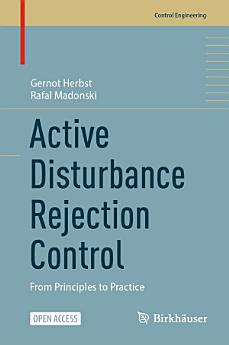Active Disturbance Rejection Control: From Principles to Practice
About this ebook
Part I covers the theoretical foundations of ADRC, giving readers the basic information in a self-contained, tutorial style. Emphasis is placed on first developing an intuition for ADRC through illustrative examples inspired by real control problems. The main concepts are then introduced and explored in a more formal and concise manner using standard control-domain-related terminology.
Part II demonstrates methods for applying ADRC in practice through software-based implementation. Utilizing laboratory testbeds to mimic real control problems from process and control areas, the authors illustrate the use of software through both model-based environments - including MATLAB/Simulink - and low-level C programming language. Common issues that one can encounter when implementing controllers in the real world are also examined, and specific solutions to these problems are offered that retain the simplicity of ADRC.
This book can be used as a textbook, handbook, or reference manual, and through its many entry points, can be easily picked up by students, practitioners, and scientists. Having in mind its introductory nature, the prerequisites for studying the considered subject are intentionally not very strict. Readers should have at least basic knowledge of systems and controls, as well as an understanding of core mathematical concepts of calculus, linear algebra, and differential equations.
Ratings and reviews
About the author
Gernot Herbst received Dipl.-Ing. and Dr.-Ing. degrees in Electrical Engineering from Chemnitz University of Technology, Germany. He was a Scientific Assistant at Chemnitz University of Technology before joining Siemens AG as an R&D Engineer. Since 2021, he is Professor at the University of Applied Sciences Zwickau, Germany. His research interests revolve around bringing modern control into industrial practice, especially using ADRC, as well as modeling and control of power electronics systems.
Rafal Madonski received a PhD in Automatic Control from Poznan University of Technology, Poland. He was a Postdoctoral Researcher in the School of Automation, Southeast University, China, and then an Associate Professor in the Energy and Electricity Research Center, Jinan University, China. He was also a visiting scholar at various scientific institutions, including the Center for Advanced Control Technologies at Cleveland State University, USA, and the Academy of Mathematics and Systems Science of the Chinese Academy of Sciences. Currently, he is associated with the Faculty of Automatic Control, Electronics and Computer Science, Silesian University of Technology in Gliwice, Poland. His research interests are the design, analysis, and application of ADRC.




